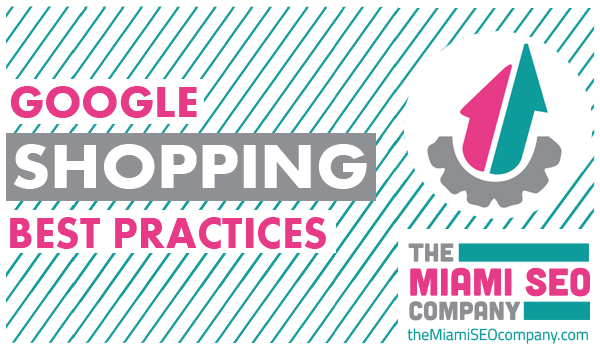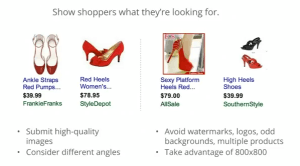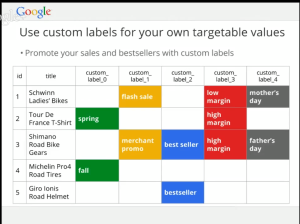Google Shopping Management
Like any PPC management company that takes the time to stay up to date with the latest and great changes with Adwords, we decided to write a post about the latest changes with with the Google shopping network. On July 11th, the best practices for shopping Google Hangouts on Air and I must say it was pretty informative and covered a lot of great material which I wanted to go over for those who are following my blog. First, it’s important to get familiar with what was covered during last months GHOA which was also on Google shopping and how to migrate from traditional PLA campaigns which I encourage you to watch if you have not done so already. Google’s primary reason for rolling out this change and making it a forced migration is to help clients get a better marketing experience and to help end users get more relevant ads so that they can find what they are looking for easily.
Some of the key goals that Google wanted to try and accomplish were:
- To provide a more retail-centric campaign management experience.
- To allow customers to be able to make changes easily for certain products.
- To allow clients to be able to see their products directly in the Adwords interface with ease and the ability to manage bid changes easily across products and categories.
The next big priority feature was to get better reporting for Adwords customers and Google certainly has come a long way since the beginning of the shopping network and the advertising/reporting that was available then. Before, you really had to create a lot of custom campaign variables and tag your URL’s very meticulously to get flexible reporting for your PLA campaign. Now you can easily configure your data by major attributes like brand product type and id for awesome insights that will help your analyst and that will also allow your clients to get the reports they are looking for. Google also released some new reporting metrics which are used to research your competitors landscape by showing benchmark CTR and Max CPC allowing you to see lost impression share. For marketers and analysts this means lots of new data and ways to make this data actionable!
Recap of How to Migrate From PLA to Shopping
During the Hangout the narrators quickly reviewed what it would take to migrate from a traditional PLA ad campaign to the Google shopping campaign as follows:
- Creating the new campaign.
- Segment your inventory into product groups.
- Pause your regular pla campaign
It’s important to note that while migrating from PLA campaigns to Shopping campaigns you could experience a dip in your performance if you don’t properly make the transition. Fore more information on how to properly migrate you should watch the video below.
Disadvantages of Using Shopping Campaigns
Preparing for your migration is important because you need to make sure your’e not going to interrupt the progress you are making with your marketing goals. Taking the time to plan your migration and the properly setup the new shopping campaign and optimizing your shopping feed to make use of all the new attribute and optimization opportunities is the key to a successful migration. Bid and budget based on the relative retail value of your products, the idea is to not be intimidated by the upgrade same principles apply.
Data feed best practices
The host of the GHOA was very adamant about the fact that data feeds are very, very important. He went as far as literally saying it three times during the hang out so it’s my guess that it probably plays a big role in the algorithm. He reminds us that the feed is used by Google to create the ads shown on the search network and clients are then able to manage the campaign in the shopping campaign based on the product data seamlessly with the new shopping campaign back end. He also mentions that if you have optimized and organized data, that is broken down into granular campaigns, Google will serve more of your ads because they aren’t finding discrepancies in the data. Much like in traditional search campaign, the better your ad titles and descriptions are, the better chance they are going to show higher just like search ads based on relevancy (much like a quality score for keywords).From what I gathered from this section best practices include:
Fresh clean data quality
Take the time to check the feed spec page on Google support and ensure all attributes are being submitted correctly and well optimized. There’s a great part of this page that allows you to see feed examples and requirements for many scenarios. If you want to sell to different countries you can see how the requirements change, go to Google merchant feed spec page on help center. Also, be sure you are using the different attributes that are used in certain verticals like electronics or apparel so that you’re ads are shown more and so that Google can serve the most relevant ads to their visitors. It’s important to note that if your product data doesn’t match what’s on your site you could face problems. Google notices a lot of clients struggling with this. Google has a team looking for this with a “team” that reviews this and they will flag your listings if they don’t match. Beyond pricing and titles, images and everything should be up to date on your product landing pages to ensure your ads don’t get flagged and that you have the best chance of increasing your reach.
Using Product Identifiers
Unique product identifiers are becoming more and more important and now we have some new ones that are being used. The new identifiers are Gtin MPN and Brand. Using these identifiers together, Google can really understand they product that your’e selling and return it really accurately based on the search queries users type in. So what do these identifiers mean?
- GTIN = Global trade item number
- MPN = Manufacturer part number
- Brand = Brand identifier
It’s recommended that you take the time to make use of each and ever unique product identifier with a organized structure to make your bid management experience easier and to provide Google’s search engine users with a better experience too.
Product Titles & Descriptions
We’ve heard it before, be user friendly but don’t stuff keywords! Titles that are like well-optimized page titles, relevant and short and concise. No caps, no promotional text. It’s recommended that you check your Adwords search query reports to get ideas as to which keywords have high search volume so that you can incorporate them into your titles and descriptions.
 Product Images
Product Images
In the GHOA, the host explains how important product images are and how users want to see your ads and understand them, one way to do this is with a great image! Examples of good product images and poor images are shown in the image to the left of the screen. The hosts explain that Google is really focusing on this area and quite possibly giving it more weight in terms of ad rank. Google recommends using white back grounds and avoiding distracting back grounds or gimmicks like flags on images or pictures with any distractions for that matter.
Bidding Based on Your Product Feed
To close the Hang out on air, the hosts touch on bidding strategies and how to tailor your product feed to provide a better bid management experience. In other words, bidding based on feed quality in order to maximize efficiency so you can manage your campaign with ease. Taking the time to really optimize the products with high margins and importance is important but you should also be able to manage a bulk amount of your products that drive majority of the revenuw with ease so that you don’t live in your product feed which makes sense.
Having a well optimized general category with all your products is critical. This is where those product categories come into play so hopefully you took the time to create a very granular product category list while developing your feed. Don’t just use your taxonomy structure, use your insights when creating this structure! For example, 2014 models coming out soon, 2013 models need to have lower bids. Have a product feed with labels used to order the products by profitability is also a great way to use custom labels.
Some additional ways to organize your data attributes are out now:
Mobile_link – direct link to mobile site! Adwords redirects were previously used but now you can provide a faster user experience because no redirects are necessary for user to get to the mobile version of your product page. Also more data quality reporting feedback in merchant account is giving about your mobile experience with this new feature.
Bundle attribute – “is_bundle” is now available allowing you to pair items i.e. a cell phone case with a phone. Previously you couldn’t now you can! Advertisers are urged to only use this if there is a main item and an accessory, not for two cameras, Adwords is not designed to handle that scenario.
Availability attribute – That’s right, no more “available for order” attribute… Now Google is using “in stock” and a very ambiguous explanation as to what Google considers in stock. They say “delivered in a timely manner” is the answer but its really what is considered an industry norm so try and do your best when making this judgement call. As long as the user knows that the average standard in the industry is the time its going to take for it to get delivered. For example, a custom couch might take 3 months which is understood but an electronic item like a keyboard or mouse should not take that long.
Landing page policy updated – image quality impacts user experience heavily now, Google is using this to evaluate relevancy and encourage clients to use clear shots. Specifically encourage white or gray backgrounds.
Attribute character limits in place now. see support page for info. You will see warnings throughout the rest of the summer and in September they will be errors (value changes “availability or reduce size of values [character limit]”) if you don’t take the time to reduce your character limits in areas where you exceed them.
Additions to Adwords Editor for Shoppping
With the new editor you can use editor for bulk management for shopping now! You can down load your campaign and work offline! You can also make bulk landing page changes, bids can be changed easily. Lastly, you can scale negative keywords management across ad groups.
Video:











